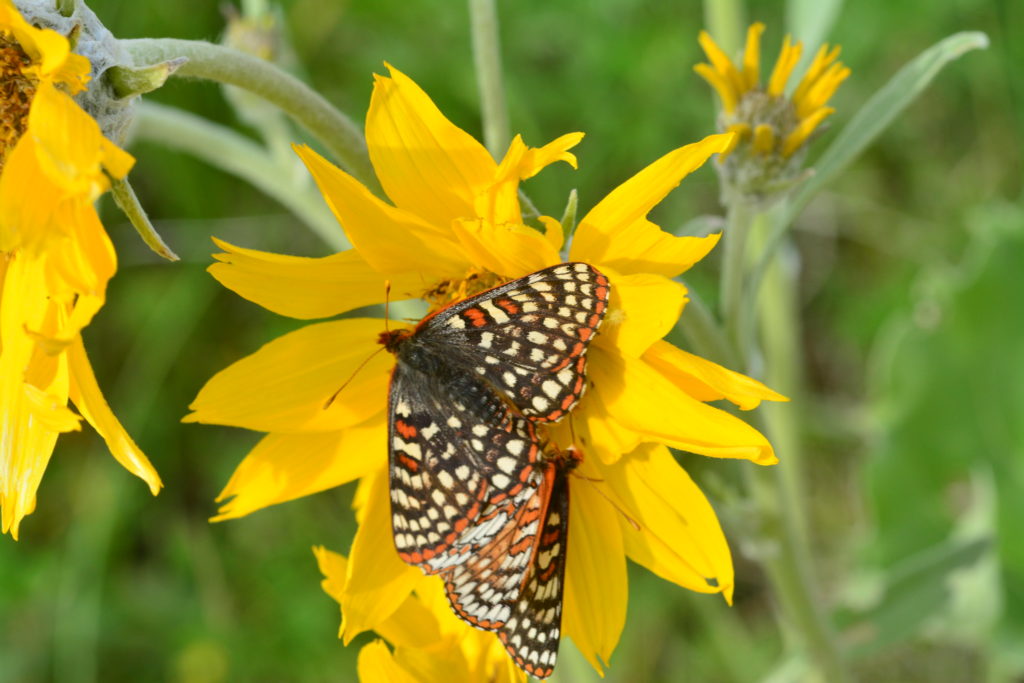Western Working Lands Snapshot | Pollinators

What is pollination?
Pollination is the first step in the reproductive process of plants. It happens when small grains of pollen are transferred between the male (anther) and female (stigma) parts of a flower. Since plants are rooted in place, they rely on wind, water, or animals to move their pollen between flowers, which in turn creates seeds that bring forth new plants.
Pollinators help plants reproduce.
Over 80% of the world’s flowering plants rely on a pollinator – an insect, bird, or other animal – to reproduce. Critters that help transfer pollen include bees, bats, butterflies, hummingbirds, beetles, ants, and many other animals
Pollinators add value for people and wildlife.
Pollinators play an invaluable role in producing the plants that feed people and many of the Earth’s animals. One out of every three bites of food we eat is created with help from pollinators including chocolate, coffee, nuts, and spices.
Pollinators also play an important role in boosting yields on working agricultural lands. Their ecological service is valued at $200 billion each year. This includes their important role in generating more profitable yields on America’s working agricultural lands, too.
How do plants attract pollinators?
Flowering plants have co-evolved with pollinators to recruit the help of specific species using a combination of shape, scent, and color. For instance, butterflies are lured toward bright, sweet-smelling purple or red flowers, while beetles are drawn to dull-colored white or green flowers.
In return for helping out the plant, a pollinator is rewarded with a meal of energy-rich nectar or protein-rich pollen. They also use flowers as shelter, to find mates, or to build nests.
Bees pollinate most of our fresh food.
More than 4,000 native bee species buzz around the United States. Honey bees alone pollinate 80% of all flowering plants, including more than 130 types of fruits and vegetables. Since they are easy to capture, bees can also serve as tell-tales of ecosystem health.
Pollinators are a key part of the ecosystem.
Beyond moving pollen around, pollinators also contribute to healthy soils because they foster diverse plant communities. Plus, they are a key part of the food web. Over 85% of birds that breed in the U.S. eat insects, including sage grouse and prairie chickens. Of course, sage grouse and prairie chickens also eat the flowers (called forbs by scientists) that pollinators help produce, making pollinators even more important to these species.
Pollinators and sustainable ranching go hand in hand.
A recent study from Montana State University found that sagebrush rangelands enrolled in rest-rotation grazing plans through the NRCS Sage Grouse Initiative produced better habitat for native pollinators like bees than pastures with no livestock grazing.
Similarly, another study showed that rangelands with sustainably managed cattle grazing had a higher abundance of the types of insects that sage grouse chicks eat than nearby un-grazed land.
We can all help pollinators recover.
Pollinator populations are dropping alarmingly across North America due to habitat loss, disease, parasites, and environmental contaminants. For instance, the number of monarchs—the familiar orange-and-black butterfly known for its annual migrations—decreased from one billion to 34 million butterflies since 1995 – just 25 years.
Luckily, private landowners are stepping up across the country to protect habitat for pollinators. Through the Farm Bill, NRCS offers dozens of conservation activities that benefit both pollinators and agricultural producers by producing healthy, high-value nectar plants.
SHARE ON
You may also like
The role corn plays for gamebirds and economies ac...
Sportsmen’s conservation policy issues from publ...
Sportsmen’s conservation policy issues from publ...


























